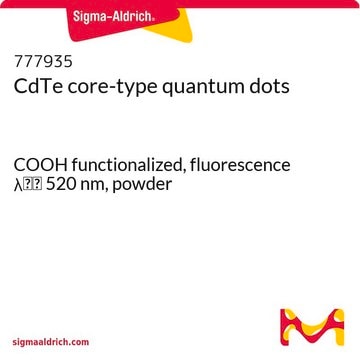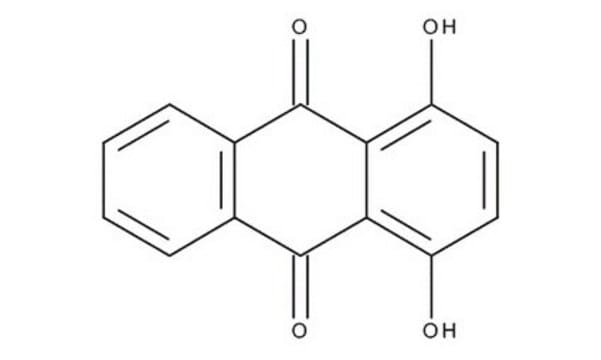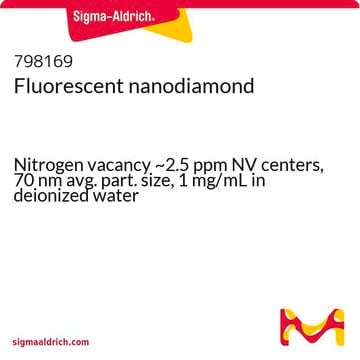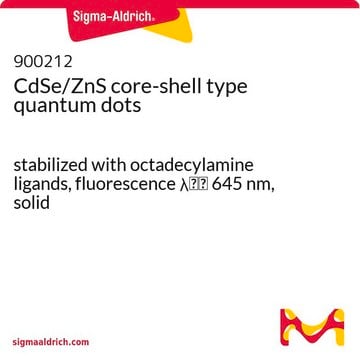900282
CdS/ZnS core-shell type quantum dots
oleic acid functionalized, fluorescence λem 450 nm, solid
Synonym(s):
Fluorescent nanocrystals, QDs
About This Item
Recommended Products
form
powder
solid
mp
>380 °C
fluorescence
λem 450 nm
λem 450 nm±10 nm, quantum yield >50%
functional group
oleic acid
Looking for similar products? Visit Product Comparison Guide
Application
Caution
Legal Information
Signal Word
Danger
Hazard Statements
Precautionary Statements
Hazard Classifications
Aquatic Chronic 2 - Carc. 1B - Muta. 2 - Repr. 2 - STOT RE 1
Supplementary Hazards
Storage Class Code
6.1C - Combustible acute toxic Cat.3 / toxic compounds or compounds which causing chronic effects
WGK
WGK 3
Flash Point(F)
Not applicable
Flash Point(C)
Not applicable
Certificates of Analysis (COA)
Search for Certificates of Analysis (COA) by entering the products Lot/Batch Number. Lot and Batch Numbers can be found on a product’s label following the words ‘Lot’ or ‘Batch’.
Already Own This Product?
Find documentation for the products that you have recently purchased in the Document Library.
Articles
Professor Sharma and colleagues review the synthesis and applications of this novel material. This includes a discussion of the unique properties of quantum dots and their suitability for solar cell applications, along with common synthesis techniques used to develop these materials.
Professor Xiaohu Gao (University of Washington, USA) provides a overview of recent quantum dot (QD) advancements and their potential for advancing bioassay and bioimaging technologies.
Perovskite quantum dots research progresses overcoming challenges, enabling rapid development of light-emitting devices.
Cadmium-free quantum dots for bioimaging offer design and synthesis strategies, enhancing bioimaging and sensing applications.
Our team of scientists has experience in all areas of research including Life Science, Material Science, Chemical Synthesis, Chromatography, Analytical and many others.
Contact Technical Service










